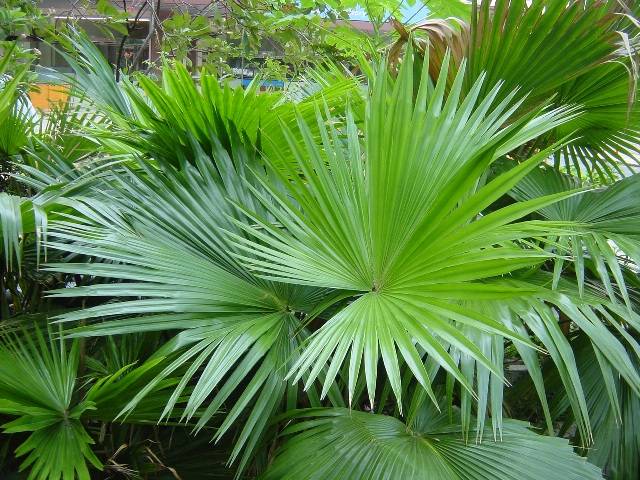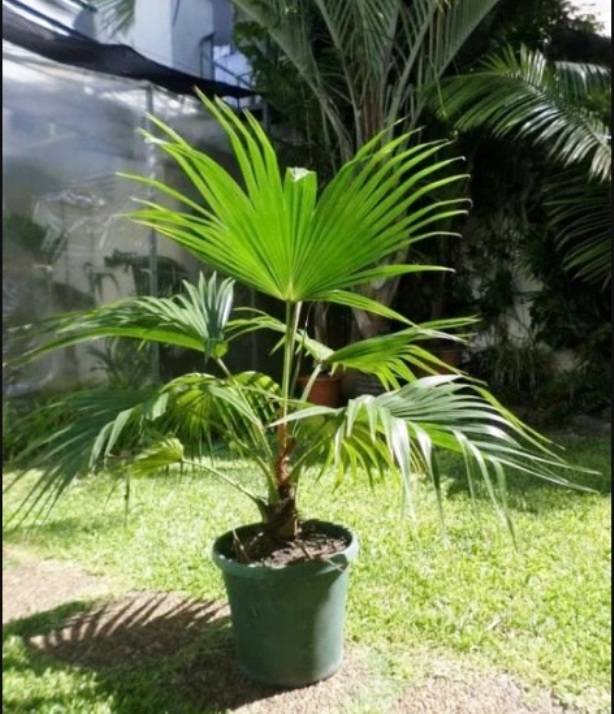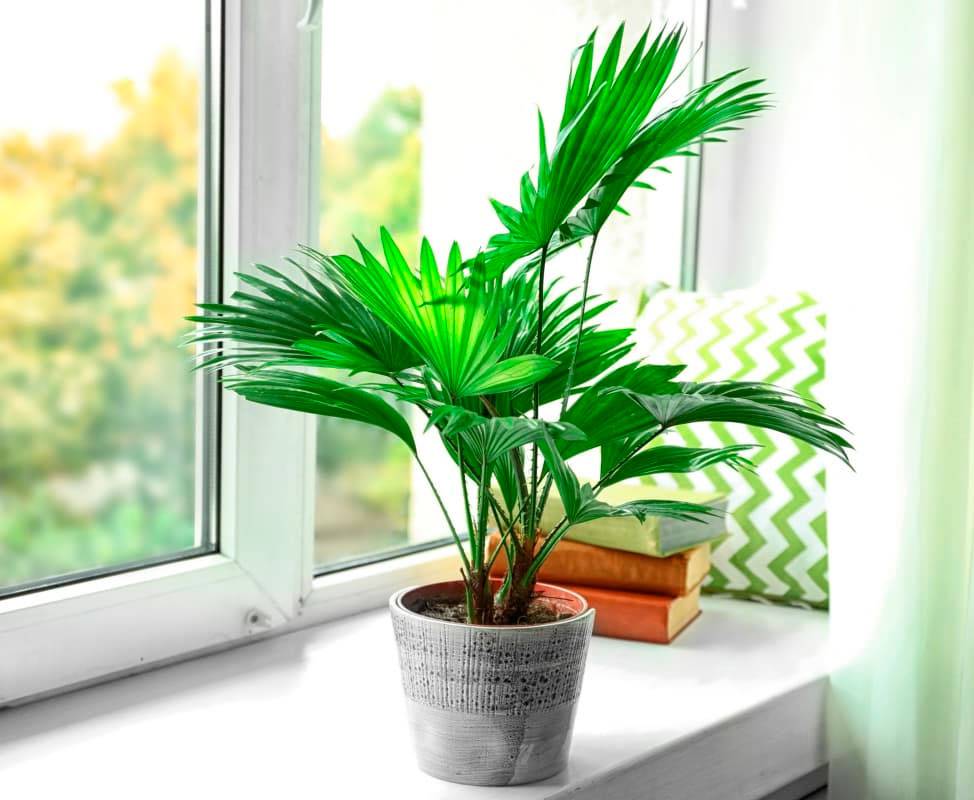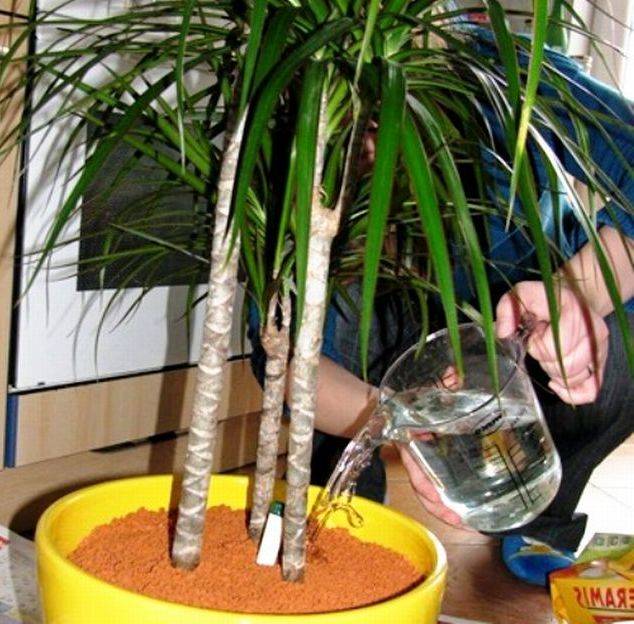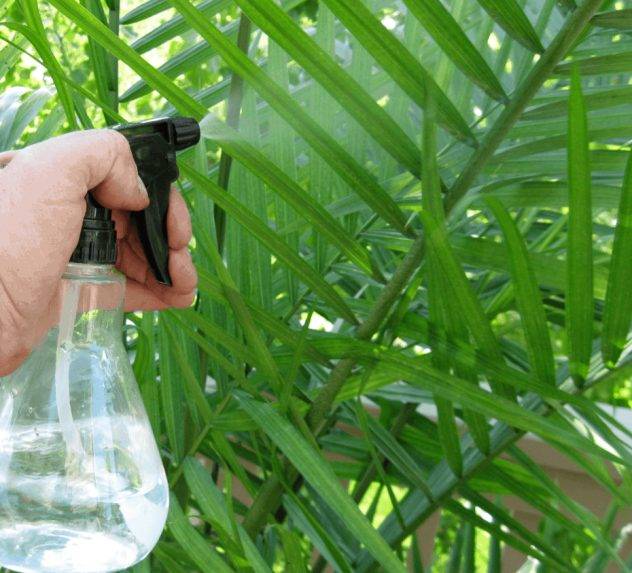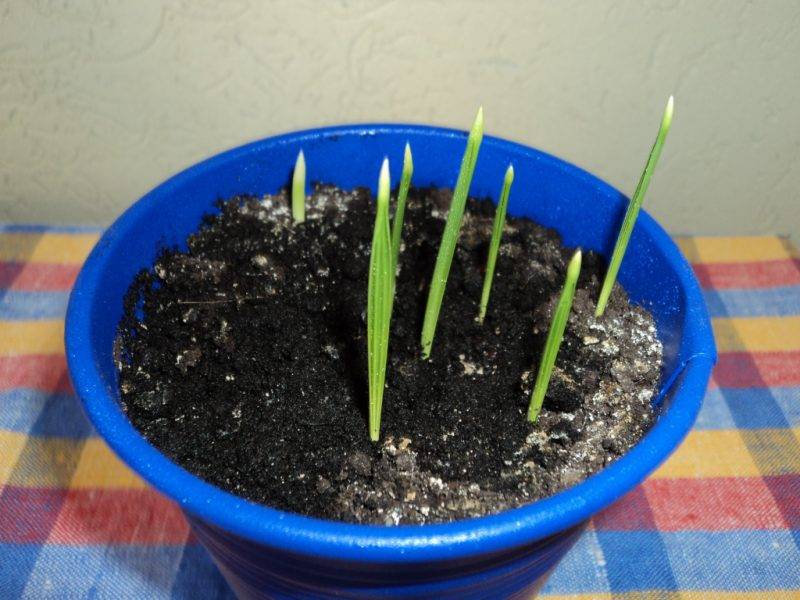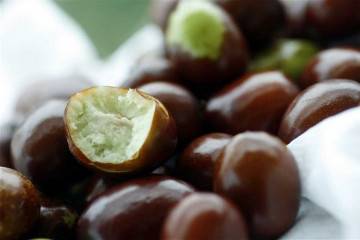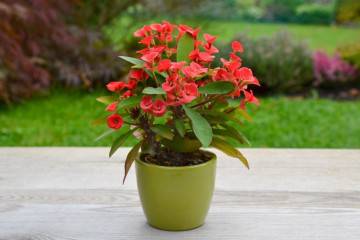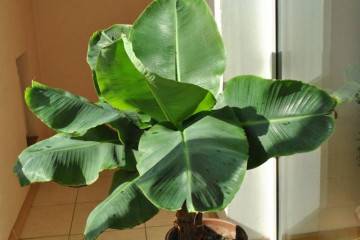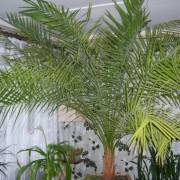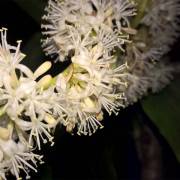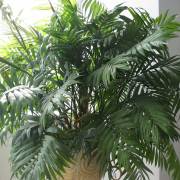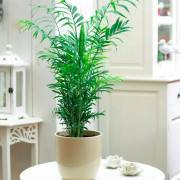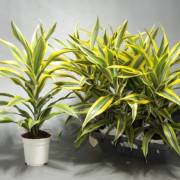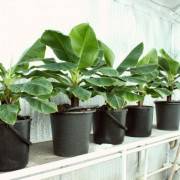Liviston palm - how to plant and care at home
Content:
This perennial palm of the monocotyledonous plant family is most often found in Australia and Africa, in the territories of Asian countries and Oceania. In Russia, Livistona chose the lands of the Black Sea coast of the Caucasus. The genus includes at least 30 species. Some of them grow in their natural environment, others in greenhouses. Some of them have adapted to living in living quarters.
Liviston palm - what is this flower
Levinstone's palm is a tree 25–40 m high, the thick trunk of which is covered with the remains of dead leaf plates. The top is decorated with a rich crown containing fan-shaped rounded leaves, cut to the middle.
When cultivated at home, the palm tree grows slowly. No trunk is generated. But a lot of leaf plates appear. With high-quality care, every year the palm tree pleases with the appearance of 3 leaves. The root system is powerful.
Varieties of palm trees
The following palms are cultivated on the personal farm:
- Chinese Livistona. Origin - South China. Height - 10-12 m, trunk in diameter - 0.5 m. Plates of a specific shape. These are large, dissected fans with narrow tips. The length of the petioles of the foliage is up to 1.5 m. On the petioles there are sharp small thorns. Livistona jade develops well in the home, office, and other premises. But it blooms only in the greenhouse.
- Livistona is round-leaved. Lush beauty islander. Trunk - 14 m, diameter - 17 cm. Rounded leaf blades are fan-shaped, greenish and smooth, 1.5 m in diameter. The leaves are dissected into sections. Petioles with small thorns. The plant withstands home and office microclimate. Home care for Liviston round-leaved is uncomplicated. The second name of the tree is Livistona rotundifolia.
- South Livistona. The homeland of the plant is the humid subtropical Australian forests. The height of the trunk is 25 m, the radius is 20 cm. Glossy leaf blade of dark green color with petioles up to 2 m. Sharp brown needles are located at the edges of the petioles.
- Livistona is deceiving. Slow growing single-stemmed palm. Height - 12 m, trunk diameter - 25 cm. The leaves are fan-shaped with numerous cuts. The outer surface of the leaf plate is dark green, the reverse side is grayish-waxy. Leaf petioles with many small sharp projections.
- Liviston Maria. In natural conditions, Liviston is up to 30 m high. The trunk is gray, thickened at the base. The sizes of the leaf plate and cuttings are 2 m each. The leaf lobes change color from reddish-pink to green-blue during life. Flowers are yellow or cream in color. Small fruits of black color.
In addition to the described palms, there are others that grow at home, but are poorly studied.
Liviston palm - home care
Not every species of Liviston can live in indoor conditions. Therefore, a tree needs to be looked after according to certain rules.
Illumination and temperature conditions
Culture loves light, but the scorching rays of the sun are not welcomed by the plant. In addition, she suffers from incandescent glass. The pot in summer and spring is best placed near windows facing east or west. And for the winter, transfer to the south side.
The plant living in the house is shaded. In warm weather, it is advisable to transfer the palm tree to the garden and place it in the shade. In winter, harden for 2 hours in frost at -5 ° C and above.
The room should be regularly ventilated in summer, but drafts should be avoided. For the symmetrical development of the bush, once every half a month, it is turned 180 degrees.
Best temperature for home keeping:
- winter - 16-18 ° C. In extreme cases, not less than 10 ° C;
- summer - 24-29 ° C.
Watering and humidity
The soil in the pot needs moisture. Therefore, summer watering is plentiful, but in the cold period the volume of liquid is reduced. Use warm and settled water.
The required humidity in the room is 60%. At lower rates, the ends of the leaves will dry out.
In summer, greens are sprayed every day from a spray bottle, periodically cleaning the foliage with a damp cloth. A warm shower is used every 30 days. In the winter season, spraying is carried out only at high temperatures.
Top dressing and soil quality
With active growth, the crop needs fertilization. If there are not enough nutrients, the palm tree living in the apartment does not develop well and does not grow leaves. Top dressing is carried out every 10 days, with liquid complex fertilizers. In the fall, the amount of dressings is reduced to once every 30 days.
Preparations for feeding:
- complex fertilizers for domestic palms;
- organics from the Gumi group;
- universal compositions for ornamental plants.
Liviston palm is a massive plant with powerful roots. Therefore, it is usually planted at home in tubs. A deep container is chosen so that the roots are not cramped. In addition, a large, heavy and stable tub is preferable so that the tree does not fall.
Liviston palm transplant
Although transplanting a palm tree is discouraged, this step is indispensable. The root system grows, the soil rots, pests appear. These reasons prompt the replacement of the planting container.
In order not to damage the palm tree, it is transplanted together with an earthen clod. Add new fertile land. The deepening of the trunk is left at the same level.
For adult plants, the procedure is carried out once every three years. At the same time, the best soil is selected, with a pH value of 5.6–5.7.
The soil is prepared independently from such a substrate:
- pine bark;
- large perlite;
- bone meal;
- coarse peat;
- charcoal;
- pebbles.
The components are taken in the ratio: 2: 1: 0.1: 2: 1: 1.
Step-by-step transplant process:
- A new pot with a larger volume is selected.
- A drainage layer is placed at the bottom.
- The plant is removed from the previous pot along with the roots.
- Scissors or pruning shears are used to renew the shoots. Rotten or dried roots are removed. Part of the felt layer of the root system is cut off. The roots are cleared of parasites.
- The palm tree is lowered into a container with a disinfectant solution with its roots down.
- Then it is transferred to a new tub (pot).
- Fall asleep with prepared soil.
Propagation of palm from seeds and side shoots
Seed material is planted immediately after purchase, as the seed quickly loses its germination. To make the seeds more fun to hatch, they are soaked for a week in water, the temperature of which is 30 ° C. The water is renewed daily. The day before sowing, the seed is treated with a mixture of fungicide and growth stimulant.
Seeds are planted in a container or in separate cups. The soil for indoor plants is selected as the soil.To enhance the looseness of the soil, add charcoal, river sand and fine expanded clay.
The seeds are lowered into the ground to a depth of 1 cm. The containers are covered with bags or glass and 2 real leaves are expected to appear. Then the seedlings are dived into separate pots. Waiting for leaves can take 3 months. Every day, the seedlings are ventilated and, if necessary, the soil is moistened.
Reproduction by offspring is rare. The lateral processes of the roots are separated during transplantation of adult palms. The procedure requires respect for the root system.
Possible growing problems
Changes in the leaves of Livistona indicate problems in the maintenance of the tree. Here is some of them:
- The tips of the leaves turn brown when the humidity in the room is low. Frequent spraying is required.
- The green mass turns yellow due to a lack of watering or nutrients in the soil. And also with an excess of sunlight.
- The leaves become covered with brown spots when watering with hard water, waterlogging of the soil, a sharp decrease in the temperature indicators of the apartment.
- The tips of the leaves become brown with a lack of liquid, low temperature content, dry air.
- The palm tree stops growing due to lack of nutrition.
- Leaves become stained if watering is insufficient.
Among the problems are the appearance of diseases and the action of pests.
Diseases and pests
The palm tree has strong immunity. But the fungus sometimes bothers the plant. They recognize his presence by dried or clarified leaves. Appears with improper care. What to do in this case? Replace the soil, disinfect the planting container, spray with fungicides.
The pests of Livistons are ticks, scale insects, mealybugs.
For the destruction of pests, drugs Aktara, Fitoverm, Akarin are used.
Livistona is a prominent and beautiful palm tree. Looks good in an apartment and office space. A little attention and easy care will ensure the safety of this tropical beauty for years to come.
